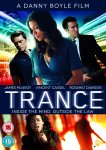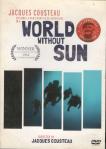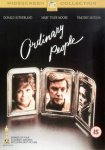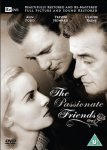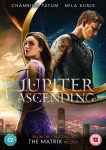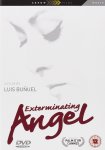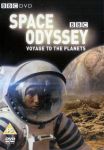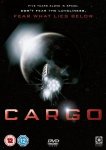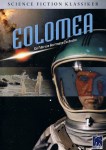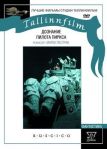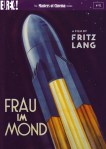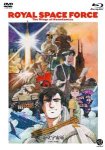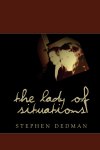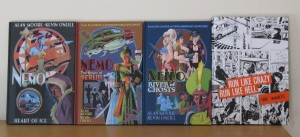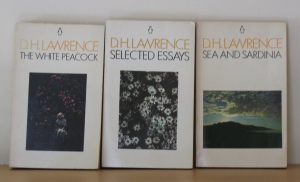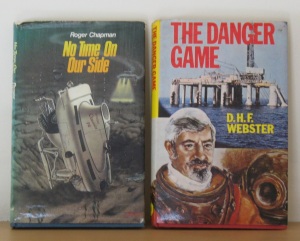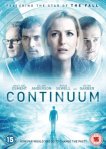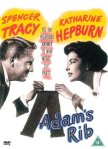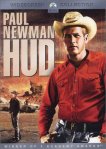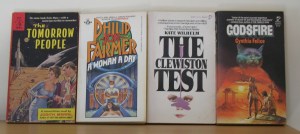Yet more movies, of varying quality, worthiness and entertainment value. Which I shall continue to document, even if a year from now I read what I’ve written and wonder why the hell I watched a particular film.
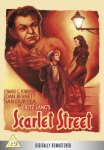 Scarlet Street, Fritz Lang (1945, USA). Godard’s Le Mépris has almost spoiled Lang’s films for me. There I was, picturing him as some sort of industrious Modernist German film-maker but in that movie he played a louche Prussian aristocrat with monocle and cigarette holder. And yet he made some wonderful noir films, full of Modernist sets and starkly-lit shots. Scarlet Street boasts plenty of the latter, but none of the former. Edward G Robinson plays a meek cashier. After a party celebrating his twenty-five years of faithful service, Robinson gets involved with femme fatale Joan Bennett, and is consequently persuaded to commit various crimes to support her… while he indulges in his hobby of painting. And then his art suddenly becomes desirable, but Bennett claims to be the painter and… well, it all gets a bit complicated after that. Scarlet Street is a well-made film, of course, but there’s nothing in it that makes it stand out from others of its time and genre.
Scarlet Street, Fritz Lang (1945, USA). Godard’s Le Mépris has almost spoiled Lang’s films for me. There I was, picturing him as some sort of industrious Modernist German film-maker but in that movie he played a louche Prussian aristocrat with monocle and cigarette holder. And yet he made some wonderful noir films, full of Modernist sets and starkly-lit shots. Scarlet Street boasts plenty of the latter, but none of the former. Edward G Robinson plays a meek cashier. After a party celebrating his twenty-five years of faithful service, Robinson gets involved with femme fatale Joan Bennett, and is consequently persuaded to commit various crimes to support her… while he indulges in his hobby of painting. And then his art suddenly becomes desirable, but Bennett claims to be the painter and… well, it all gets a bit complicated after that. Scarlet Street is a well-made film, of course, but there’s nothing in it that makes it stand out from others of its time and genre.
 Picnic at Hanging Rock*, Peter Weir (1975, Australia). So I’ve watched several of Weir’s films over the years and he’s not a director who’s really stood out for me – I mean, Witness, Dead Poets Society, The Mosquito Coast… er, Green Card? This is middle-brow, if not lower, Hollywood entertainment, sometimes with a nod at worthiness – Gallipolli, for example – but just as often not. But Picnic at Hanging Rock is on the 1001 Films You Must See Before You Die list, and I was aware of the regard in which it was held, so… Okay, the mystery is never solved and I can see how that sort of bounces you out of your typical Hollywood box, and the movie is also resolutely Australian, to a degree that a film such as Mad Max most certainly isn’t, so that perhaps some people thought better of the film than it deserved. Because it is, to be honest, a bit dull. It is also, to be fair, a period piece and it does present its period well. But, meh.
Picnic at Hanging Rock*, Peter Weir (1975, Australia). So I’ve watched several of Weir’s films over the years and he’s not a director who’s really stood out for me – I mean, Witness, Dead Poets Society, The Mosquito Coast… er, Green Card? This is middle-brow, if not lower, Hollywood entertainment, sometimes with a nod at worthiness – Gallipolli, for example – but just as often not. But Picnic at Hanging Rock is on the 1001 Films You Must See Before You Die list, and I was aware of the regard in which it was held, so… Okay, the mystery is never solved and I can see how that sort of bounces you out of your typical Hollywood box, and the movie is also resolutely Australian, to a degree that a film such as Mad Max most certainly isn’t, so that perhaps some people thought better of the film than it deserved. Because it is, to be honest, a bit dull. It is also, to be fair, a period piece and it does present its period well. But, meh.
 A Humble Life, Aleksandr Sokurov (1997, Japan). The third of Oriental Elegy‘s three documentaries – did I mention I managed to buy a copy for £25 and currently copies go for £200 to £300? Anyway. Like the other two films, it was made in Japan and takes as its topic an old Japanese woman who lives alone in an old house in a small mountain village. It is also engimatic, features Sokurov’s trademark distortion of the image, such that it often appears like a painting, and lots of intense close-ups. Sokurov documents the woman’s daily activities, often without voice-over, and achieves more in setting tone and mood than incidental music could have done (although Sokurov often makes excellent use of music). This is perhaps the most elegiac of the three films on the disc, and I’ll be watching again. Several times, no doubt.
A Humble Life, Aleksandr Sokurov (1997, Japan). The third of Oriental Elegy‘s three documentaries – did I mention I managed to buy a copy for £25 and currently copies go for £200 to £300? Anyway. Like the other two films, it was made in Japan and takes as its topic an old Japanese woman who lives alone in an old house in a small mountain village. It is also engimatic, features Sokurov’s trademark distortion of the image, such that it often appears like a painting, and lots of intense close-ups. Sokurov documents the woman’s daily activities, often without voice-over, and achieves more in setting tone and mood than incidental music could have done (although Sokurov often makes excellent use of music). This is perhaps the most elegiac of the three films on the disc, and I’ll be watching again. Several times, no doubt.
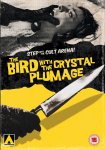 The Bird with the Crystal Plumage*, Dario Argento (1972, Italy). This was apparently Argento’s first film, and it’s pretty obvious it’s a giallo right from the start. An American writer resident in Rome – you can only tell he’s American because he mentions it in conversation, as, of course, his dialogue is dubbed into Italian – witnesses a man attack a woman in a gallery late one night. He fails to break into the gallery, but does scare off the attacker. Another passer-by calls the authorities, who arrive in time to save the woman, who had been knifed. Then further murders following the same modus operandi take place, and the inspector in charge of the case asks the American for help in solving it. It’s all very giallo, and there’s a twist in the end which I probably should have spotted, but it’s probably closer to Mario Bava’s Baron Blood and Lisa and the Devil than it is to Suspiria. I’m not entirely sure why it makes the 1001 Films You Must See Before You Die list, but there’s a lot of films on there I could say the same about.
The Bird with the Crystal Plumage*, Dario Argento (1972, Italy). This was apparently Argento’s first film, and it’s pretty obvious it’s a giallo right from the start. An American writer resident in Rome – you can only tell he’s American because he mentions it in conversation, as, of course, his dialogue is dubbed into Italian – witnesses a man attack a woman in a gallery late one night. He fails to break into the gallery, but does scare off the attacker. Another passer-by calls the authorities, who arrive in time to save the woman, who had been knifed. Then further murders following the same modus operandi take place, and the inspector in charge of the case asks the American for help in solving it. It’s all very giallo, and there’s a twist in the end which I probably should have spotted, but it’s probably closer to Mario Bava’s Baron Blood and Lisa and the Devil than it is to Suspiria. I’m not entirely sure why it makes the 1001 Films You Must See Before You Die list, but there’s a lot of films on there I could say the same about.
 Le Bambole, Franco Rossi et al (1965, Italy). This is another one of those Italian anthology films, which are, of course, about women – well, women as men see them – and perhaps might once have been described by Brits as “sex comedies” given that at some point the actresses usually end up clad in only their lingerie. The first of the four “episodes” is about a young woman on the telephone to her mother while her husband slouches about the apartment trying to amuse himself until she is ready to accept his sexual advances. The second has Elke Sommer looking for the ideal father for her child – something to do with the shape of his ears – before eventually recognising the suitability of her young and virile guide about town. The third sees a wife trying to rid herself of her husband so she can be with her lover, only for her various plans for his demise to go awry. And the final section is apparently an adaptation of a segment of Boccaccio’s The Decameron and stars Gina Lollobrigida, but to be honest I can’t really remember what it was about.
Le Bambole, Franco Rossi et al (1965, Italy). This is another one of those Italian anthology films, which are, of course, about women – well, women as men see them – and perhaps might once have been described by Brits as “sex comedies” given that at some point the actresses usually end up clad in only their lingerie. The first of the four “episodes” is about a young woman on the telephone to her mother while her husband slouches about the apartment trying to amuse himself until she is ready to accept his sexual advances. The second has Elke Sommer looking for the ideal father for her child – something to do with the shape of his ears – before eventually recognising the suitability of her young and virile guide about town. The third sees a wife trying to rid herself of her husband so she can be with her lover, only for her various plans for his demise to go awry. And the final section is apparently an adaptation of a segment of Boccaccio’s The Decameron and stars Gina Lollobrigida, but to be honest I can’t really remember what it was about.
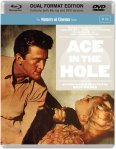 Ace in the Hole*, Billy Wilder (1951, USA). Oof, this was nasty one, not the sort of thing you’d expect from Billy Wilder. A disgraced big city reporter pulls into a small New Mexico town and persuades the local paper owner to take him on. A year later, while covering a rattlesnake hunt he learns of a local man trapped by a rockfall in a cave. It’s the story he’s been waiting for. If it gets syndicated, it could get him back into the big time. So when a mining engineer proposes shoring up the cave and then digging out the trapped man, the reporter vetoes it and instead they start to drill down from the top of the cliff. Meanwhile, the media has picked up the story and descended on the region. It becomes a complete circus. The reporter, of course, is loving it as he controls access to the trapped man. Meanwhile, the days pass, the trapped man weakens… The ending hardly comes as a surprise – people who play with others’ lives in flms generally get their comeuppance. Although, of course, it’s the trapped man who pays the bigger price. I can sort of see why this is considered a classic, but it leaves a nasty after-taste and for that reason I couldn’t like it.
Ace in the Hole*, Billy Wilder (1951, USA). Oof, this was nasty one, not the sort of thing you’d expect from Billy Wilder. A disgraced big city reporter pulls into a small New Mexico town and persuades the local paper owner to take him on. A year later, while covering a rattlesnake hunt he learns of a local man trapped by a rockfall in a cave. It’s the story he’s been waiting for. If it gets syndicated, it could get him back into the big time. So when a mining engineer proposes shoring up the cave and then digging out the trapped man, the reporter vetoes it and instead they start to drill down from the top of the cliff. Meanwhile, the media has picked up the story and descended on the region. It becomes a complete circus. The reporter, of course, is loving it as he controls access to the trapped man. Meanwhile, the days pass, the trapped man weakens… The ending hardly comes as a surprise – people who play with others’ lives in flms generally get their comeuppance. Although, of course, it’s the trapped man who pays the bigger price. I can sort of see why this is considered a classic, but it leaves a nasty after-taste and for that reason I couldn’t like it.
1001 Films You Must See Before You Die count: 606

